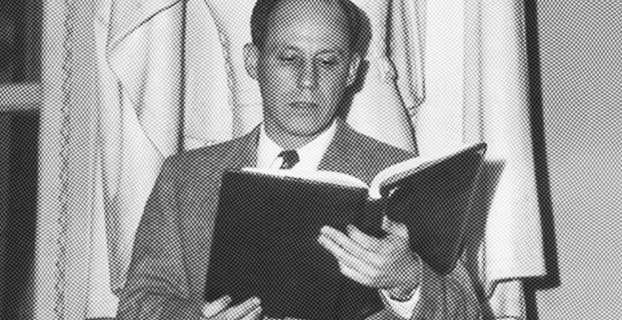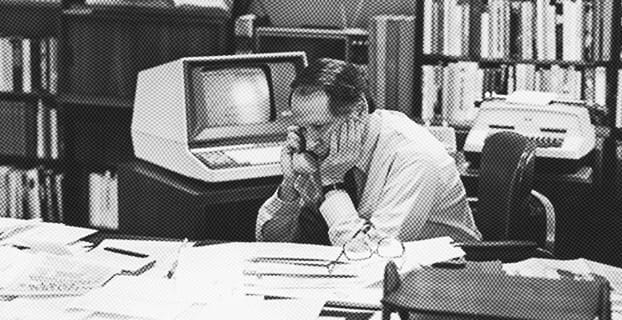- Network Effects
- Cornell Oligopoly
- Switching Costs
- Economies of Scale
- Two-Sided Markets
- Experience Curves
- Path Dependency
- Regulatory Capture
- Prisoner's Dilemma
- Consumer Surplus
- Information Asymmetry
- Price Discrimination
- Contestable Markets
- Vertical Integration
- Diminishing Marginal Utility
- Time Value of Money
- Resource-Based View
- Transaction Cost Economics
- Secondary Reinforcers
- Loss Aversion
- Reciprocity
- Social Proof
- Status Signaling
- Cognitive Dissonance
- Commitment and Consistency
- Scarcity Effect
- Endowment Effect
- Anchoring
- Mere Exposure Effect
- Sunk Cost Fallacy
- Habit Formation
- Authority Bias
- Availability Heuristic
- Prospect Theory
- Mental Accounting
Models from Economics
Network Effects
Network effects occur when the value of a product or service increases as more people use it. Each new user adds value for all existing users, creating a powerful positive feedback loop. Network effects can be direct (same-side, where users directly benefit from more users) or indirect (cross-side, where different user groups benefit from each other's participation).
Facebook as an example:
Facebook's rise illustrates direct network effects. When Facebook launched at Harvard in 2004, its value was minimal with few users. As more students joined, the platform became exponentially more valuable since each new user brought their content and connections. By reaching critical mass first at Harvard, then at other universities, and finally globally, Facebook created tremendous value through these network effects that made it difficult for competitors to replicate.
How it works and how to use it:
- Businesses with strong network effects often lead to winner-take-most or winner-take-all markets
- The critical mass threshold represents a crucial inflection point where growth becomes self-sustaining
- Network effects create powerful competitive moats that are difficult for new entrants to overcome
- Early market share leadership is disproportionately valuable in network effect businesses
- The strength of network effects can be quantified by measuring the incremental value each new user brings to existing users
- Network effects businesses often have extremely high operating leverage and profit margins at scale
More on Network Effects:
Cornell Oligopoly
Cornell Oligopoly (named for the Cornell University economist Alfred E. Kahn) describes markets with a small number of firms where suppliers contend with fixed capacity constraints, leading to price stability and higher margins. Unlike Bertrand competition where firms can quickly adjust output, capacity constraints in Cornell Oligopoly make undercutting competitors costly since firms cannot easily accommodate increased demand, resulting in more stable pricing and reduced incentives for price wars.
Cruise industry as an example:
The cruise line industry exemplifies Cornell Oligopoly dynamics. Major players like Carnival, Royal Caribbean, and Norwegian operate with fixed ship capacity that takes years and billions to expand. When one company lowers prices to attract more customers, they can only accommodate demand up to their existing ship capacity. This capacity constraint reduces the incentive for price wars, as competitors know that any company cutting prices can't steal significant market share. Consequently, prices remain relatively stable, and companies focus on differentiation rather than competing primarily on price.
How it works and how to use it:
- Industries with significant capacity constraints and high capacity expansion costs often maintain stable pricing and higher profit margins
- These businesses have reduced incentive for destructive price competition
- Capital intensity creates barriers to entry, limiting new competitive threats
- Companies compete more on quality, service, and differentiation rather than price
- Pricing power increases as industry-wide capacity utilization approaches maximum levels
- Investors should seek industries where major capacity expansions require significant time and capital
- Examples include cruise lines, hotels in land-constrained areas, specialized manufacturing, and heavy equipment rental
More on Cornell Oligopoly:
- Journal of Economics: Oligopoly with Capacity Constraints
- Industrial Organization: Theory and Applications
Switching Costs
Switching costs represent the penalties (financial, psychological, procedural, or relational) that customers face when changing from one product or service provider to another. High switching costs create "stickiness" that locks customers into continuing relationships with their current providers even when potentially superior alternatives emerge, allowing businesses to maintain pricing power and customer relationships over extended periods.
Enterprise software as an example:
Enterprise software implementations demonstrate powerful switching costs. Consider a company that implements Oracle's enterprise resource planning (ERP) system. After spending millions on implementation, customization, and training thousands of employees, the company faces enormous costs to switch to SAP or another competitor. Even if a competing product offers slightly better features or lower annual licensing fees, the switching costs far outweigh these benefits. This creates high customer retention and pricing power for Oracle, often allowing them to raise prices annually with limited customer attrition.
How it works and how to use it:
- High switching costs create predictable revenue streams and customer lifetime value
- Companies can often raise prices incrementally without significant customer loss
- Switching costs create barriers to entry for competitors and reduce market share volatility
- The most powerful switching costs combine multiple dimensions (technical, financial, procedural)
- Investors should analyze both the magnitude and durability of switching costs
- Product categories with high switching costs include enterprise software, banking relationships, industrial equipment with proprietary components, and specialized B2B services
- Switching costs often increase over time as customers become more deeply integrated with a provider
More on Switching Costs:
Economies of Scale
Economies of scale occur when the average cost of producing each unit decreases as the scale of production increases. This happens through spreading fixed costs over more units, gaining purchasing power with suppliers, specializing labor, and utilizing more efficient technologies. Businesses with strong economies of scale can price more competitively while maintaining higher margins than smaller competitors, creating a virtuous cycle of growth.
Walmart as an example:
Walmart's dominance in retail demonstrates economies of scale. With over 11,000 stores and $600+ billion in revenue, Walmart leverages its scale to negotiate lower costs from suppliers than smaller competitors can achieve. Its massive distribution network spreads fixed logistics costs across billions of items. Technology investments in inventory management and point-of-sale systems become increasingly cost-effective per store as they deploy across thousands of locations. These scale advantages allow Walmart to maintain lower prices while achieving higher operating margins than smaller competitors, reinforcing its market position.
How it works and how to use it:
- Businesses with significant economies of scale can simultaneously offer lower prices and earn higher margins
- Scale advantages typically grow non-linearly (especially in digital businesses)
- Economies of scale create "virtuous cycles" where market leadership reinforces itself
- The minimum efficient scale (MES) represents a critical threshold where a business achieves competitive cost structures
- Investors should analyze both the slope and maximum potential of the scale curve
- Industries with high fixed costs tend to have stronger economies of scale
- Scale advantages can exist at multiple levels: production, distribution, marketing, R&D, and G&A
- Digital businesses often demonstrate extreme economies of scale due to near-zero marginal costs
More on Economies of Scale:
Two-Sided Markets
Two-sided markets (or multi-sided platforms) connect distinct groups of users who provide value to each other, creating powerful indirect network effects. These platforms must simultaneously attract and serve multiple constituencies, with the platform operator capturing value by facilitating interactions and transactions between the sides. The complexity of balancing different user groups' needs creates significant barriers to entry once a platform achieves critical mass.
Visa as an example:
Visa's payment network exemplifies a successful two-sided market connecting merchants and consumers. To succeed, Visa needed to solve the "chicken and egg" problem: merchants wouldn't accept Visa without consumer cardholders, and consumers wouldn't adopt cards without merchant acceptance. Visa addressed this by subsidizing the consumer side (offering rewards, convenience, and float) while charging the merchant side (through interchange fees). Once critical mass was achieved, powerful indirect network effects took hold—each new merchant makes cards more valuable to consumers, and each new cardholder makes acceptance more valuable to merchants—creating a nearly impenetrable competitive position.
How it works and how to use it:
- Successful two-sided markets often exhibit winner-take-most dynamics due to indirect network effects
- The platform operator must solve the "chicken and egg" problem to achieve critical mass
- Pricing strategy usually involves subsidizing the more price-sensitive side and monetizing the side that derives more value
- Two-sided markets create significant barriers to entry once established
- The value of the platform grows superlinearly with the product of the participants on each side
- Investors should evaluate both the strength of cross-side network effects and the platform's ability to extract and retain value
- Examples include payment networks, operating systems, marketplaces, property listing services, and dating apps
- Platform governance and quality control become increasingly important at scale
More on Two-Sided Markets:
- HBR: Strategies for Two-Sided Markets
- Platform Revolution by Geoffrey Parker, Marshall Van Alstyne, and Sangeet Paul Choudary
Experience Curves
Experience curves (or learning curves) describe the systematic decrease in production costs as cumulative production volume increases. This effect, typically modeled as a fixed percentage cost reduction for each doubling of cumulative production, stems from learning-by-doing, process improvements, increasing specialization, and technology advancements. Companies furthest along the experience curve gain sustainable cost advantages that competitors cannot easily replicate without accumulating similar production volumes.
First Solar as an example:
In solar panel manufacturing, First Solar leveraged the experience curve to build competitive advantage. By aggressively expanding production and driving cumulative volume, they achieved approximately 15-20% cost reduction for each doubling of production. Starting with costs around $3 per watt in 2005, First Solar drove costs below $0.40 per watt by 2019 through accumulated experience in materials science, manufacturing processes, and supply chain optimization. This cost leadership allowed First Solar to remain profitable despite overall industry price declines, while many competitors with less cumulative production experience operated at losses or exited the market.
How it works and how to use it:
- Companies with higher cumulative production volumes gain sustainable cost advantages
- The steepness of the experience curve varies by industry (typically 10-30% cost reduction per doubling)
- Market share leaders benefit disproportionately from experience effects
- Strategic "buying" of experience through aggressive pricing can create long-term advantage
- Experience curve effects combine with economies of scale to reinforce market leadership
- Industries with steep experience curves often consolidate around a few large players
- Investors should evaluate both the slope of the experience curve and a company's position on it
- Manufacturing-intensive industries like semiconductors, batteries, and renewable energy often show pronounced experience effects
More on Experience Curves:
- BCG: The Experience Curve
- Strategic Management Journal: The Experience Curve and the Market Size Effect
Path Dependency
Path dependency occurs when current and future decisions are constrained by past decisions and experiences, even when past circumstances are no longer relevant. This economic concept explains how initial conditions, historical accidents, and sequencing of events can lock in certain trajectories, creating persistent advantages for early movers or established standards that may persist even when superior alternatives emerge. Path dependency creates inertia that benefits incumbents and shapes industry evolution.
QWERTY keyboard as an example:
The QWERTY keyboard layout demonstrates path dependency in technology adoption. Originally designed in the 1870s to prevent mechanical typewriter jams by slowing typing speed, QWERTY became standardized as users invested in learning the layout. When digital keyboards eliminated the mechanical constraints that justified QWERTY's inefficient design, alternatives like the Dvorak layout offered superior typing efficiency. However, the massive installed base of QWERTY-trained typists, QWERTY-designed keyboards, and typing courses created overwhelming switching costs. This path dependency has locked in QWERTY as the dominant keyboard layout despite its suboptimal design for modern use.
How it works and how to use it:
- Initial advantages or early standardization can create persistent market leadership regardless of objective product superiority
- The sequence of historical events matters significantly in determining market outcomes
- "Lock-in" effects occur when coordination challenges prevent switching to potentially superior alternatives
- Path dependency often leads to "increasing returns to adoption" where established solutions gain cumulative advantages
- Industries with high compatibility requirements, significant learning investments, or strong network effects show pronounced path dependency
- Investors should identify whether a product category is early in its evolution (where path dependency can be shaped) or mature (where it's difficult to overcome)
- Examples include operating systems, technical standards, programming languages, and industrial equipment with significant operator training
- First-mover advantages are typically stronger in markets with high path dependency
More on Path Dependency:
- Stanford Encyclopedia: Path Dependence
- Increasing Returns and Path Dependence in the Economy by W. Brian Arthur
Regulatory Capture
Regulatory capture occurs when regulatory agencies, designed to serve the public interest, become dominated by the industries they're intended to regulate. This manifests through industry-favorable regulations, reduced competition, barrier-to-entry creation, and price protections. The capture happens through various mechanisms including the revolving door between industry and regulator positions, information asymmetries, resource imbalances, and political influence. Businesses benefiting from regulatory capture often enjoy unusually stable profits and reduced competitive threats.
The cable industry as an example:
The U.S. cable and telecommunications industry demonstrates regulatory capture through municipal monopolies and regulatory barriers. Companies like Comcast secured exclusive franchise agreements for specific geographic territories, creating local monopolies. Industry lobbying has restricted municipal broadband expansion and prevented price regulations. The revolving door between the FCC and the telecom industry reinforces this dynamic—the FCC chairman from 2017-2021 previously served as legal counsel for Verizon. These captured regulations have enabled cable companies to maintain some of the highest profit margins and lowest customer satisfaction scores in American business while facing limited competition.
How it works and how to use it:
- Regulatory capture creates powerful, persistent barriers to entry that protect incumbent businesses
- Captured industries often exhibit unusually high and stable profit margins and returns on capital
- Larger, more established companies typically benefit disproportionately from regulatory capture
- Areas prone to capture include industries with concentrated economic power, complex technical requirements, or essential service status
- Regulatory capture's impacts include reduced competition, higher prices, slower innovation, and increased industry concentration
- Investors should evaluate both the current regulatory framework and the risk of future regulatory reform
- Examples include telecommunications, healthcare, banking, defense contracting, and utilities
- Regulatory capture creates market inefficiencies that can persist for decades if the capture mechanisms remain strong
More on Regulatory Capture:
Prisoner's Dilemma
The Prisoner's Dilemma is a game theory model illustrating why rational individuals might not cooperate even when collaboration would benefit everyone. In business contexts, it explains competitive dynamics where firms face incentives to undercut each other (in price, advertising, etc.) despite the collective harm this causes. Industries structured as prisoner's dilemmas typically experience declining margins over time, while those that avoid this trap (through regulation, concentration, differentiation, or collusion) can maintain more favorable economics.
The airline industry as an example:
The airline industry has historically exemplified prisoner's dilemma dynamics. Consider two airlines, Delta and United, serving the same route. Each can choose high fares (cooperation) or low fares (defection). If both maintain high fares, they both generate strong profits. However, each has an incentive to cut prices to gain market share. When one cuts prices, the other must follow to avoid losing passengers. The result is both airlines charging lower fares and earning lower profits than if they had maintained higher pricing. This dynamic contributed to decades of poor industry economics, with Warren Buffett once joking that investors would have been better served if someone had shot down the Wright brothers' plane at Kitty Hawk.
How it works and how to use it:
- Industries structured as prisoner's dilemmas typically experience poor long-term economics with declining margins
- Concentrated industries with few rational competitors are more likely to avoid destructive competition
- Businesses with strong differentiation can escape commodity-like prisoner's dilemma dynamics
- Capacity constraints, high fixed costs, and low marginal costs amplify prisoner's dilemma problems
- Formal coordination mechanisms (legal industry groups, signaling) or implicit collusion may emerge to avoid the worst outcomes
- Investors should assess whether an industry's structure facilitates cooperation or destructive competition
- Industries prone to prisoner's dilemma problems include airlines, shipping, commodity chemicals, and undifferentiated retail
- Regulation sometimes serves as a coordination mechanism to prevent destructive competition (e.g., utilities)
More on Prisoners Dilemma:
- Stanford Encyclopedia of Philosophy: Prisoner's Dilemma
- The Evolution of Cooperation by Robert Axelrod
Consumer Surplus
Consumer surplus represents the difference between what consumers are willing to pay for a product and what they actually pay. It measures the net benefit consumers receive, with larger surpluses indicating greater value creation. Businesses that generate substantial consumer surplus often develop more loyal customers, positive word-of-mouth, and room for future price increases. Conversely, businesses that extract most of the value through pricing may be vulnerable to competition and disruption.
Google Search as an example:
Google Search illustrates consumer surplus at extraordinary scale. Studies estimate the average user would pay $500+ annually for Google Search if required, yet Google provides it for free (monetizing through advertising instead). With billions of users, Google generates hundreds of billions in annual consumer surplus. This massive value creation has consequences: users develop strong habits around Google Search, making them reluctant to try alternatives even when privacy concerns arise. Google's position remains dominant partly because competitors would need to offer dramatically better search to overcome the switching inertia created by this substantial consumer surplus.
How it works and how to use it:
- Businesses generating large consumer surplus develop more durable customer relationships and positive word-of-mouth
- Companies can gradually capture more of the value they create through pricing as they establish strong market positions
- Excessive value capture through aggressive pricing creates vulnerability to disruption
- Products with high perceived value relative to price are less vulnerable during economic downturns
- Consumer surplus provides "pricing cushion" that can be tapped for future growth
- Investors should assess not just current monetization but total value creation as an indicator of future potential
- Digital products and platforms often generate enormous consumer surplus due to zero marginal costs
- Luxury and status goods typically capture most of the value they create, leaving minimal consumer surplus
More on Consumer Surplus:
Information Asymmetry
Information asymmetry occurs when one party in a transaction possesses more or better information than the other. This imbalance creates market inefficiencies and opportunities for exploitation, but also enables business models that resolve these imbalances. Companies can profit either by leveraging proprietary information advantages or by creating trust mechanisms that reduce asymmetries. Understanding information flows and asymmetries reveals both competitive advantages and vulnerabilities in business models.
Carfax as an example:
Carfax's business model resolves information asymmetry in used car markets. Historically, used car sellers possessed far more information about a vehicle's condition and history than potential buyers, creating the "lemons problem" where buyers assumed the worst and discounted accordingly. Carfax aggregates vehicle history data from thousands of sources (service records, accident reports, etc.) that was previously fragmented and largely inaccessible to buyers. By providing comprehensive vehicle history reports, Carfax reduces information asymmetry, increases market efficiency, and captures value through report fees. This transparency increases overall market transaction volume by reducing buyer uncertainty and risk premiums.
How it works and how to use it:
- Persistent information asymmetries create opportunities for businesses that either exploit or resolve them
- Companies with proprietary data or unique information collection capabilities can maintain high margins
- Trust mechanisms (ratings, certifications, guarantees) can command premium pricing by reducing information asymmetries
- Marketplaces that reduce information asymmetries create value by expanding transaction volume and reducing risk premiums
- Data aggregation across fragmented sources creates particularly valuable information advantages
- Information asymmetries often exist due to regulatory constraints, complexity barriers, or fragmented information sources
- Industries with pronounced information asymmetries include healthcare, financial services, real estate, and specialized B2B services
- Investors should assess both the durability of information advantages and the risk of technological disruption of these advantages
More on Information Asymmetry:
Price Discrimination
Price discrimination occurs when a company charges different prices to different customers for the same product or service based on their willingness to pay. When effectively implemented, price discrimination allows businesses to capture more of the total potential value from a market by converting consumer surplus into producer surplus. This strategy requires both the ability to segment customers by willingness to pay and mechanisms to prevent arbitrage between segments.
Airlines as an example:
Airlines exemplify sophisticated price discrimination. A single flight might have passengers who paid anywhere from $200 to $2,000 for nearly identical transportation. Airlines accomplish this through complex segmentation mechanisms: advance purchase requirements (business travelers book later than vacationers), Saturday night stay requirements (leisure travelers can stay over weekends, business travelers prefer to be home), refundability premiums, loyalty program tiers, and dynamic pricing algorithms that adjust based on demand patterns. These mechanisms effectively sort passengers by willingness to pay and prevent arbitrage, allowing airlines to extract more total revenue than would be possible with uniform pricing.
How it works and how to use it:
- Effective price discrimination significantly increases total revenue and profit compared to uniform pricing
- The ideal price discrimination captures each customer's maximum willingness to pay without leaving consumer surplus
- Businesses must balance the revenue benefits against potential customer resentment from perceived pricing unfairness
- Price discrimination requires mechanisms to segment customers and prevent reselling/arbitrage between segments
- Companies with proprietary customer data and digital delivery have advantages in implementing price discrimination
- The most effective price discrimination strategies use product/service variations to justify price differences
- Industries with high fixed costs and low marginal costs benefit most from price discrimination
- Examples include airlines, hotels, software (enterprise vs. consumer pricing), telecommunications, and pharmaceuticals
More on Price Discrimination:
Contestable Markets
A contestable market is one where there are few barriers to entry and exit, allowing potential competitors to enter profitably when incumbents earn excess returns and exit without significant losses if competition intensifies. The theory suggests that even markets with few actual competitors can behave competitively if they are contestable. Conversely, markets with high entry barriers or sunk costs tend to remain concentrated and maintain higher profitability, as potential entrants are deterred despite attractive returns.
The restaurant industry as an example:
The restaurant industry illustrates high contestability, explaining its persistently low average returns despite many successful individual establishments. When a restaurant location generates visibly high profits, new entrants quickly appear nearby to capture some of that success. Opening a new restaurant requires relatively modest capital (compared to manufacturing), and restaurant equipment has reasonable resale value, limiting exit costs. Even specific cuisines are contestable, as chefs can adapt menus to changing trends. This contestability drives continuous innovation but limits sustainable excess returns across the industry, with even successful restaurant groups rarely achieving high long-term returns on capital.
How it works and how to use it:
- Industries with low barriers to entry and low sunk costs tend to have poor economics regardless of current concentration
- The threat of potential competition disciplines pricing and profitability even in concentrated markets if they're contestable
- Barriers that reduce contestability include: regulatory approvals, network effects, scale economies, switching costs, and proprietary technology
- Sunk costs (investments that cannot be recovered upon exit) significantly reduce contestability
- Investors should assess not only current competition but the structural barriers that deter potential entrants
- Industries with high contestability include restaurants, many retail categories, basic services, and standardized manufacturing
- Industries with low contestability include pharmaceuticals, telecommunications infrastructure, and operating systems
- Contestability explains why some concentrated markets have poor economics while others with similar concentration have excellent returns
More on Contestable Markets:
- Contestable Markets and the Theory of Industry Structure by William Baumol
- Wikipedia: Contestable Market
Vertical Integration
Vertical integration occurs when a company expands to control upstream suppliers or downstream distribution channels rather than relying on external market transactions. This strategy aims to reduce transaction costs, ensure supply, capture more margin, and control quality across the value chain. Vertical integration can create powerful competitive advantages when critical inputs or distribution channels represent bottlenecks, but may reduce flexibility and increase fixed costs under changing market conditions.
Apple as an example:
Apple's vertical integration strategy illustrates both the advantages and evolution of integration decisions. Apple designs its own custom processors (A-series and M-series chips), develops its operating systems and core applications, and operates its own retail stores and digital marketplaces. This integration gives Apple control over the entire user experience, enables hardware-software optimization, and captures value at multiple points. However, Apple still outsources manufacturing to specialists like Foxconn, recognizing that production at scale remains more efficient through external partners. Apple's strategic choice to vertically integrate in areas providing differentiation while using market relationships elsewhere demonstrates thoughtful boundary-setting rather than dogmatic integration.
How it works and how to use it:
- Vertical integration is most valuable when critical inputs or distribution channels are bottlenecks or have high transaction costs
- Successful integration allows companies to capture margin at multiple points in the value chain
- Integration improves coordination and reduces principal-agent problems across the supply chain
- Vertical integration can reduce flexibility and increase fixed costs, creating vulnerability during market shifts
- The optimal degree of vertical integration varies based on industry maturity, technological change rate, and market concentration
- Integration creates more value in industries with complex, interdependent components requiring tight coordination
- Investors should evaluate whether a company's integration decisions align with where maximum value can be captured in the industry
- Digital businesses can achieve many integration benefits through APIs and partnerships without formal ownership
More on Vertical Integration:
Diminishing Marginal Utility
Diminishing marginal utility describes the decrease in additional satisfaction or benefit derived from consuming one more unit of a good or service when consumption is already high. The first units provide substantial utility, while additional units deliver progressively less incremental value. This principle explains consumption patterns, price sensitivity variations based on usage intensity, and limits to growth in many consumer markets as penetration increases.
Netflix as an example:
Netflix's subscription model confronts diminishing marginal utility in viewing hours. For light viewers (0-5 hours monthly), each additional hour delivers high utility, making the subscription valuable even at higher price points. For moderate viewers (5-20 hours), utility per hour decreases but remains positive. For heavy viewers (20+ hours), the marginal utility of additional viewing drops substantially, with some content consumed mainly because it's included "for free" rather than from strong preference. This diminishing utility explains why even with thousands of content options, viewing tends to plateau rather than expand indefinitely. It also suggests Netflix's optimal strategy might include tiered pricing that captures different willingness-to-pay based on viewing intensity.
How it works and how to use it:
- Consumer spending in mature categories faces natural constraints from diminishing utility, limiting growth potential
- Pricing strategies should account for different utility curves across customer segments
- Product bundling can work when items have different utility curves for different customers
- Subscription models succeed partly by hiding the declining utility of marginal consumption
- Businesses selling necessities face less impact from diminishing utility than those selling discretionary items
- Innovative features or new use cases can reset the utility curve, restarting the growth cycle
- Investors should distinguish between businesses selling items with relatively flat utility curves versus steep ones
- Premium brands can partially overcome diminishing utility by attaching status or identity value to consumption
More on Diminishing Marginal Utility:
Time Value of Money
The time value of money principle states that a sum of money is worth more now than the same sum in the future due to its potential earning capacity. This concept underpins financial valuation, investment decisions, and business models that manipulate timing of cash flows. Businesses that receive payment before delivering goods/services (negative working capital) or that can accelerate revenue while deferring costs create significant shareholder value beyond what appears in simple income statement analysis.
Amazon as an example:
Amazon's negative working capital model demonstrates the power of time value of money in retail operations. Amazon typically receives payment from customers immediately upon order placement but pays suppliers 30-60 days after receiving inventory. For each $100 in sales, Amazon might collect $100 on day 1 but not pay the $75 cost of goods until day 45. This creates a persistent float of cash that scales with revenue growth. At Amazon's scale, this float represents billions in effectively interest-free financing. The faster Amazon grows, the more this working capital advantage compounds, allowing them to fund expansion without proportional external capital and creating tremendous shareholder value through this timing advantage.
How it works and how to use it:
- Businesses that collect cash upfront before delivering goods/services gain significant financing advantages
- Negative working capital models can fund growth with less external capital, increasing returns on invested capital
- Subscription and membership models create disproportionate value through the upfront annual fee structure
- Businesses with long-term contracts and recurring revenue streams warrant higher valuations due to cash flow timing
- Payment timing power largely depends on relative bargaining positions between businesses, suppliers, and customers
- Industries with negative working capital include grocery retail, subscription services, insurance, and many online businesses
- Investors should analyze working capital trends as leading indicators of business health and competitive position
- Financial institutions fundamentally monetize the time value of money through maturity transformation
More on Time Value of Money:
- Time Value of Money: CFA Institute
- McKinsey: Valuation - Measuring and Managing the Value of Companies
Resource-Based View
The Resource-Based View (RBV) of strategic management posits that sustainable competitive advantage stems from a firm's control of valuable, rare, inimitable, and non-substitutable (VRIN) resources and capabilities. Rather than focusing on external industry positioning, RBV emphasizes the internal resources that enable firms to implement strategies competitors cannot easily duplicate. These resources include tangible assets, intangible assets, and organizational capabilities that develop over time.
LVMH as an example:
LVMH's luxury brand portfolio demonstrates the resource-based view through its collection of inimitable intangible assets. Brands like Louis Vuitton, Dior, and Moët Hennessy represent historical heritage and craftsmanship built over centuries that competitors cannot replicate regardless of capital investment. LVMH combines these brand assets with organizational capabilities in selective distribution, artisanal manufacturing, and luxury retail expertise. While competitors can create new luxury products, they cannot replicate the centuries of heritage, craftsmanship reputation, and emotional connections that make LVMH's brands VRIN resources, enabling them to maintain price premiums and resist commoditization despite minimal functional advantages.
How it works and how to use it:
- Sustainable competitive advantage derives from resources that are valuable, rare, inimitable, and non-substitutable (VRIN)
- The most powerful resources are often intangible (brands, culture, knowledge, relationships) rather than physical assets
- Historical path dependency creates resources that cannot be purchased or quickly developed by competitors
- Companies should invest disproportionately in developing and protecting their most distinctive VRIN resources
- Organizational capabilities that emerge from complex interactions are particularly difficult for competitors to replicate
- Resource value is context-dependent and can change with technology shifts or consumer preferences
- Investors should identify whether a company's outperformance stems from VRIN resources or temporary advantages
- Examples of VRIN resources include technical expertise (ASML), accumulated data (Google), brand heritage (Ferrari), and organizational processes (Toyota Production System)
More on Resource-Based View:
Transaction Cost Economics
Transaction Cost Economics (TCE) examines why some economic exchanges occur within firms (hierarchies) while others occur between firms (markets). It focuses on the costs of executing and enforcing transactions, particularly when specific investments, uncertainty, and complexity create friction. TCE explains organizational boundaries, vertical integration decisions, and contract structures by identifying governance mechanisms that minimize total costs including both production and transaction costs.
Movie studio talent contracts as an example:
Movie studios' evolving approach to talent contracts illustrates TCE principles. Historically, studios maintained actors under long-term contracts (hierarchies) to control their specific human capital and prevent holdup problems. As the star system developed, high-value talent gained bargaining power, increasing the costs of internal governance. Studios shifted toward project-based contracts (markets) with complex contingent compensation (profit participation, box office bonuses). These contracts manage transaction costs through detailed terms addressing specific investments, performance measurement, and dispute resolution. Marvel's long-term contracts with key actors for multiple films represent a hybrid governance structure that reduces repeat transaction costs while maintaining flexibility compared to traditional studio contracts.
How it works and how to use it:
- Business structures evolve to minimize the sum of production costs and transaction costs
- High transaction costs push activities inside firms (vertical integration) despite potential production cost disadvantages
- Specific investments that have limited value outside a particular relationship create vulnerability to opportunistic behavior
- Complex, long-term contracts emerge to govern transactions with high specificity and uncertainty
- Digital technology has generally reduced transaction costs, enabling more market-based exchanges and specialized firms
- Platform business models succeed partly by reducing transaction costs between fragmented buyers and sellers
- Investors should analyze whether a company's organizational boundaries align with transaction cost minimization
- Industries with high asset specificity, complex quality measurement, or significant intellectual property tend toward more vertical integration
More on Transaction Cost Economics:
Models from Psychology
Secondary Reinforcers
Secondary reinforcers are stimuli that have acquired reinforcing properties through association with primary reinforcers (those satisfying basic biological needs like food, water, and safety). Unlike primary reinforcers, secondary reinforcers are learned rather than innate, making them powerful tools for shaping consumer behavior. They explain how initially neutral stimuli like brands, status symbols, or digital notifications can develop motivational properties that drive habitual consumption and brand loyalty beyond functional benefits.
Starbucks as an example:
Starbucks has masterfully created secondary reinforcers throughout its customer experience. The distinctive logo, green straws, cup designs, store aesthetics, and even the sound of milk steaming have become conditioned stimuli associated with the primary reinforcement of caffeine and sugar. Through repeated pairing with these primary reinforcers, Starbucks' sensory elements themselves become rewarding, triggering anticipatory pleasure even before consumption. This explains why Starbucks customers often feel satisfaction simply from holding the branded cup or entering the characteristic store environment. These secondary reinforcers create powerful differentiation and customer loyalty beyond the functional coffee product, allowing Starbucks to maintain premium pricing despite objectively similar alternatives.
How it works and how to use it:
- Products with strong secondary reinforcers create more persistent consumer habits and brand loyalty
- Sensory cues (visual, auditory, olfactory) can become powerful reinforcers through classical conditioning
- Digital products can create especially rapid secondary reinforcement through immediate, variable rewards
- Companies can deliberately design and strengthen secondary reinforcers through consistent pairing with primary rewards
- The most effective secondary reinforcers engage multiple sensory modalities simultaneously
- Secondary reinforcement partially explains brand premiums and consumer attachment beyond functional benefits
- Products involving frequent consumption allow faster development of secondary reinforcers
- Examples include luxury brands, addictive products (nicotine, caffeine), social media notifications, and distinctive packaging
More on Secondary Reinforcers:
- Journal of Consumer Research: Secondary Reinforcement Effects
- Principles of Behavior by Richard Malott
Loss Aversion
Loss aversion is the psychological tendency for people to feel the pain of losses more intensely than the pleasure of equivalent gains, typically by a factor of 2-3x. This cognitive bias explains why people often take greater risks to avoid losses than to achieve gains and why the fear of losing what one already has exerts powerful influence on decision-making. Businesses that understand and leverage loss aversion can design more compelling offers, pricing strategies, and customer retention programs.
Amazon Prime as an example:
Amazon Prime's success demonstrates loss aversion in subscription design. After paying the annual membership fee, customers perceive "free" shipping as an ownership right they already possess. When shopping on non-Prime websites, the addition of shipping costs at checkout is experienced as a loss of this "right," even if the total price is lower than Amazon's. This perceived loss drives customers back to Amazon to avoid the psychological pain of paying for shipping. Amazon amplifies this effect by prominently displaying how much customers have "saved" on shipping, reinforcing the perceived value of the membership. This loss-aversion-based strategy has helped Amazon capture a disproportionate share of e-commerce growth and maintain extraordinary customer retention rates.
How it works and how to use it:
- Framing offers in terms of avoiding losses is typically more motivating than equivalent potential gains
- Free trials and samples create temporary ownership that triggers loss aversion when discontinued
- Subscription models benefit from loss aversion as cancellation feels like giving up existing benefits
- Price increases are less resisted when framed as removing a temporary discount rather than raising prices
- Product features perceived as rights or entitlements create stronger loyalty than those seen as bonuses
- Businesses can strategically set reference points to leverage loss aversion in negotiations and pricing
- Money-back guarantees reduce purchase resistance by removing the risk of loss
- Communications highlighting what customers might lose without a product often outperform those emphasizing benefits
More on Loss Aversion:
- Prospect Theory: An Analysis of Decision under Risk by Kahneman & Tversky
- Thinking, Fast and Slow by Daniel Kahneman
Reciprocity
Reciprocity is the powerful social norm that compels people to repay others for what they've received. This innate human tendency to feel obligated to return favors, gifts, and concessions operates largely outside conscious awareness and influences behavior across cultures. Businesses that strategically incorporate reciprocity into their customer interactions can increase conversion rates, customer loyalty, and word-of-mouth marketing by triggering this deeply ingrained psychological principle.
Costco as an example:
Costco's famous free sample program illustrates reciprocity in retail. When shoppers accept samples, they experience a small psychological debt that creates subtle pressure to reciprocate. This reciprocity manifests as higher purchase rates for sampled products—studies show conversion rates increasing by 300-600% during sampling periods. The reciprocity effect explains why many shoppers feel mild discomfort taking a sample without buying, despite no explicit obligation. Importantly, the reciprocity trigger operates subconsciously, affecting purchase decisions without shoppers attributing their behavior to the sample. Costco's investment in sampling generates positive ROI through both immediate sales and the broader perception of generosity that strengthens store loyalty.
How it works and how to use it:
- Small, unexpected gifts or concessions trigger disproportionately large reciprocity obligations
- Reciprocity works largely outside conscious awareness, influencing decisions without explicit recognition
- The principle operates across both B2C and B2B contexts, though with different manifestations
- Free resources, educational content, and unexpected service upgrades all leverage reciprocity
- Digital products can scale reciprocity through low-cost valuable content (freemium models)
- The principle is strongest when gifts appear authentic rather than transparently manipulative
- Personalized or customized offerings trigger stronger reciprocity than standardized ones
- Businesses with long customer lifecycles can systematically build reciprocity through periodic unexpected benefits
More on Reciprocity:
- Influence: The Psychology of Persuasion by Robert Cialdini
- Journal of Marketing Research: The Rule of Reciprocation
Social Proof
Social proof is a psychological phenomenon where people assume the actions of others reflect correct behavior in ambiguous situations. This cognitive shortcut leads individuals to adopt behaviors, attitudes, and purchase decisions they observe in others, especially peers or admired groups. The principle explains why testimonials, reviews, popularity indicators, and peer usage statistics dramatically influence consumer behavior and why market leadership often becomes self-reinforcing.
Booking.com as an example:
Booking.com extensively leverages social proof to drive conversion optimization. Their interface prominently displays multiple social proof signals: "23 people viewing this property right now," "Last booked 2 hours ago," "In high demand - only 2 rooms left," and "300+ people have booked this property in the last 24 hours." These indicators create impression of consensus and urgency, addressing the fundamental uncertainty in travel booking. A/B testing shows these social proof elements significantly increase conversion rates, particularly for unfamiliar properties or destinations. The effectiveness stems from both informational social proof (others' choices suggest quality) and normative social proof (desire to conform to group behavior), reducing decision anxiety and accelerating purchase decisions.
How it works and how to use it:
- Social proof is most influential when situations involve uncertainty, ambiguity, or perceived risk
- Different reference groups create varying social proof strength (peers > experts > general population)
- Market leaders can create powerful self-reinforcing cycles through visible social proof
- Digital interfaces allow real-time, personalized social proof that traditional marketing cannot match
- Negative social proof ("Few customers choose this option") typically backfires, reinforcing undesired behavior
- Companies can strategically amplify natural social proof through design and communication choices
- The principle works across product categories but is strongest for socially visible consumption and experience goods
- Effective social proof appears authentic and specific rather than generic or manipulated
More on Social Proof:
- Influence: The Psychology of Persuasion by Robert Cialdini
- Journal of Consumer Research: Social Influence in Consumption
Status Signaling
Status signaling refers to consumption choices made partly or primarily to communicate social position and identity rather than for functional benefits. This behavior stems from the fundamental human desire for status, recognition, and group belonging. Status-signaling products serve as costly signals that communicate information about the owner's resources, taste, or group affiliation. Understanding status dynamics helps explain price premiums, consumer loyalty, and competitive insulation in many product categories.
Tesla as an example:
Tesla's success demonstrates modern status signaling beyond traditional luxury conspicuous consumption. Tesla vehicles serve as multi-dimensional status signals: environmental consciousness (versus traditional luxury cars), technological sophistication (early adopter status), financial success (price point), and cultural values alignment (progressive identity). Unlike traditional luxury goods that signal primarily wealth, Tesla creates a composite signal that communicates membership in a particular socioeconomic-cultural tribe. This explains why many Tesla owners are extraordinarily brand loyal and serve as vocal advocates—the car forms part of their identity expression. The status signaling aspect partially insulates Tesla from direct price competition, as cheaper alternatives wouldn't provide the same social signaling value.
How it works and how to use it:
- Status-signaling products command price premiums disconnected from functional value
- Different consumer segments signal status in different ways (conspicuous vs. inconspicuous, material vs. experiential)
- Digital transformation has created new status currencies (followers, engagement, exclusive access)
- Status signals evolve over time as mainstream adoption dilutes exclusivity
- The most powerful status products signal multiple dimensions simultaneously (wealth, taste, values, knowledge)
- Products visible to others carry stronger status signaling potential than private consumption
- Status dynamics explain why some luxury markets resist disruption despite massive price premiums
- Companies can strategically design "status leakage" to maintain exclusivity while growing volume
More on Status Signaling:
- The Theory of the Leisure Class by Thorstein Veblen
- Signaling Status with Luxury Goods: The Role of Brand Prominence
Cognitive Dissonance
Cognitive dissonance is the mental discomfort experienced when holding contradictory beliefs, values, or attitudes, especially when these conflicts relate to decisions or behaviors. To reduce this uncomfortable tension, people modify their attitudes or rationalize their choices after the fact. This psychological mechanism helps explain post-purchase satisfaction, brand loyalty, and resistance to negative information about chosen products or services, as consumers subconsciously work to justify their decisions.
Apple as an example:
Apple's premium pricing strategy benefits from cognitive dissonance effects. When consumers pay significantly more for an iPhone versus competing devices with similar technical specifications, they experience potential dissonance ("Did I overpay?"). To reduce this discomfort, users subconsciously emphasize the iPhone's positive attributes while downplaying negatives. This post-purchase rationalization strengthens brand loyalty, increases satisfaction ratings, and creates resistance to competitive information. Apple strategically reinforces this process by emphasizing the iPhone's design quality, ecosystem integration, and status value—giving customers ready-made justifications to reduce dissonance. The higher the price premium, the stronger the dissonance effect, partially explaining Apple's remarkable customer retention despite premium pricing.
How it works and how to use it:
- Higher-involvement decisions (expensive, public, irreversible) create stronger dissonance effects
- Post-purchase dissonance reduction helps explain brand loyalty beyond objective product performance
- Companies can reduce negative dissonance by providing reassurance and validation after purchase
- Luxury and premium brands benefit from customers' psychological need to justify their spending
- Testimonials and reviews are more persuasive when they align with reducing potential customers' anticipated dissonance
- Subscription businesses with upfront annual payments benefit from dissonance-driven usage motivation
- Free trials can create psychological ownership that triggers dissonance when contemplating non-purchase
- Companies can strategically increase switching costs by maximizing the dissonance associated with changing providers
More on Cognitive Dissonance:
- A Theory of Cognitive Dissonance by Leon Festinger
- Journal of Consumer Psychology: Cognitive Dissonance in Consumer Behavior
Commitment and Consistency
Commitment and consistency describes people's strong psychological need to appear consistent with their previous statements, beliefs, and actions. Once individuals take a position or make a commitment (especially publicly), they face internal and external pressure to behave consistently with that commitment. This tendency influences consumer behavior through foot-in-the-door techniques, escalating commitment patterns, and brand loyalty based on past choices rather than ongoing rational evaluation.
LinkedIn as an example:
LinkedIn's growth strategy leverages commitment and consistency to drive profile completion and engagement. The platform begins with minimal barriers to creating a basic profile, then prominently displays a "profile strength" meter showing completion percentage. Each small commitment (adding a photo, education history, skills) creates psychological pressure to maintain consistency by completing subsequent sections. LinkedIn amplifies this effect by sending notifications about profile views and connection opportunities that increase with profile completeness, reinforcing the value of previous commitment. This sequential commitment approach has proven more effective than requesting all information upfront, as each small step increases the likelihood of completing the next, ultimately leading to higher-quality profiles and stronger platform engagement.
How it works and how to use it:
- Small initial commitments significantly increase compliance with larger subsequent requests
- Public commitments create stronger consistency pressure than private ones
- Written commitments (including digital actions) prove more binding than verbal or mental ones
- Companies can leverage "choice closure" by getting customers to explicitly affirm their decisions
- Loyalty programs work partly through consistency with the self-perception as a repeat customer
- User-generated content creates powerful commitment effects as people align with their public statements
- Businesses can strategically create escalating commitment paths that lead to desired customer behaviors
- The principle explains why customers who invest time in learning systems or personalizing products are less price-sensitive
More on Commitment and Consistency:
- Influence: The Psychology of Persuasion by Robert Cialdini
- Journal of Personality and Social Psychology: Commitment and Behavior Change
Scarcity Effect
The scarcity effect describes people's tendency to value and desire things more when they are rare, limited, or difficult to obtain. This psychological principle stems from both the perception that scarce items are more valuable (due to supply and demand) and the fear of missing opportunities (loss aversion). Scarcity influences purchasing decisions, creates urgency, and can transform ordinary products into coveted items through real or perceived limitations on availability.
Nintendo as an example:
Nintendo consistently leverages scarcity with its product launches to drive demand and pricing power. For decades, Nintendo has released new consoles and games in quantities below anticipated demand, creating periodic shortages. When the Nintendo Switch launched, limited initial production created waitlists, secondary market premiums, and extensive media coverage about the difficulty of finding the console. While competitors Sony and Microsoft typically maximize unit production for launches, Nintendo's artificial scarcity strategy generates several benefits: sustained full-price sales without discounting, extended product lifecycles, free publicity through shortage coverage, and enhanced perceived value. The repeated success of this approach demonstrates how managed scarcity can maximize long-term profitability even at the expense of short-term sales volume.
Conclusions:
- Scarcity is most effective when combined with social proof (others wanting the same limited resource)
- Newly scarce items trigger stronger responses than items that have always been limited
- Limited time offers generally outperform limited quantity offers in driving immediate action
- Scarcity works through both information effects ("If it's scarce, it must be good") and psychological reactance ("I hate missing opportunities")
- Artificial scarcity can backfire if perceived as manipulative rather than genuine
- Digital products can create scarcity through exclusive access, limited functionality, or time-restricted availability
- Luxury brands systematically manage scarcity through controlled production, wait lists, and limited distribution
- Companies can leverage scarcity either temporarily (flash sales, limited editions) or as core business strategy (luxury positioning)
More on Scarcity Effect:
- Influence: The Psychology of Persuasion by Robert Cialdini
- Journal of Consumer Research: The Scarcity Heuristic
Endowment Effect
The endowment effect is the tendency for people to ascribe higher value to things merely because they own them. Once individuals take possession of an item, they typically demand significantly more to give it up than they would be willing to pay to acquire it if they didn't own it. This psychological bias, related to loss aversion and status quo preference, influences pricing strategies, trial offers, return policies, and how businesses frame ownership experiences.
Adobe as an example:
Adobe's shift from perpetual software licenses to the Creative Cloud subscription model initially generated customer resistance partly due to the endowment effect. Users who had purchased perpetual licenses felt they "owned" their software and valued this ownership more highly than objective analysis would suggest. Adobe countered the endowment effect through several strategies: offering temporary deep discounts to establish new ownership feelings toward subscriptions, highlighting exclusive new features only available to subscribers, and eventually discontinuing updates for perpetual licenses. The gradual transition allowed new endowment effects to develop around the subscription (cloud storage, automatic updates, cross-device access), eventually overcoming the resistance. This case illustrates both the power of the endowment effect and strategies to overcome it when business models must evolve.
How it works and how to use it:
- Physical possession creates stronger endowment effects than abstract ownership
- The effect appears rapidly, with people valuing items more highly almost immediately after acquiring them
- Free trials and sampling leverage the endowment effect by creating temporary psychological ownership
- Digital products can generate endowment effects through personalization, customization, and data creation
- Product returns remain lower than economically rational due to the endowment effect
- Framing purchases as "completing a set" or "adding to a collection" amplifies the effect
- The endowment effect helps explain why switching costs are often higher than objective analysis would predict
- Subscription businesses benefit when they can create psychological ownership despite the absence of legal ownership
More on Endowment Effect:
- Anomalies: The Endowment Effect by Kahneman, Knetsch & Thaler
- Journal of Economic Perspectives: Experimental Tests of the Endowment Effect
Anchoring
Anchoring is a cognitive bias where individuals rely heavily on the first piece of information encountered (the "anchor") when making decisions. This initial reference point disproportionately influences subsequent judgments, even when the anchor is arbitrary or irrelevant. Anchoring affects perceptions of value, price sensitivity, negotiation outcomes, and product evaluations, making it a powerful tool for pricing strategy and presentation of options.
Williams-Sonoma as an example:
Williams-Sonoma's introduction of a bread maker illustrates strategic anchoring in retail. When Williams-Sonoma initially launched a bread maker at $275, sales were disappointing. Instead of lowering the price, they added a larger, more feature-rich model priced at $429. The original $275 model then experienced a significant sales increase despite no changes to the product itself. The $429 model served as a price anchor that made the $275 version appear as a relative bargain. While few customers purchased the premium model, its presence in the product line effectively reframed the perceived value of the original product. This demonstrates how companies can use deliberate anchoring through product line architecture to influence value perceptions and willingness to pay.
How it works and how to use it:
- Initial exposure to prices, features, or performance metrics creates powerful anchors that influence subsequent judgments
- Premium products often serve primarily as anchors to drive sales of mid-tier options
- "Sale" prices derive much of their effectiveness from the anchor of the original price
- Companies can strategically set high anchors in negotiations, pricing, and product specifications
- Anchors significantly influence perceptions of quality, value, and appropriate spending levels
- The most effective anchors are plausible but ambitious, stretching perception without breaking credibility
- Retail displays, marketing materials, and sales presentations should carefully consider which values become anchors
- Anchors are particularly powerful when consumers lack strong prior reference points or product familiarity
More on Anchoring:
- Judgment Under Uncertainty: Heuristics and Biases by Tversky & Kahneman
- Harvard Business Review: Setting the Right Price
Mere Exposure Effect
The mere exposure effect (or familiarity principle) is the psychological phenomenon where people develop preferences for things simply because they are familiar with them. Repeated exposure to stimuli—whether products, brands, people, or ideas—increases liking and comfort, even without conscious awareness of the exposures. This effect explains aspects of brand building, advertising effectiveness, and how market incumbents maintain psychological advantages over new entrants.
Coca-Cola as an example:
Coca-Cola's ubiquitous brand presence demonstrates the mere exposure effect at global scale. Coca-Cola deliberately maximizes brand exposure across environments (retail shelves, vending machines, restaurants, advertisements, sponsorships, merchandise) even beyond direct sales opportunities. Research shows that consumers develop more positive attitudes toward Coca-Cola simply through this repeated passive exposure, independent of advertising messages or consumption experiences. In blind taste tests, many consumers cannot distinguish between cola brands or actually prefer competitors, yet still purchase Coca-Cola due to the comfort and positive associations from familiarity. This explains Coca-Cola's continued dominance despite objectively similar alternatives and their emphasis on "always available" distribution strategies that maximize exposure frequency.
How it works and how to use it:
- Repeated exposures increase positive affect toward stimuli, with effects strengthening up to a point before plateauing
- The effect works even with subliminal or incidental exposures that don't reach conscious awareness
- Novel or complex stimuli show stronger mere exposure effects through initial discomfort reduction
- Brand familiarity through mere exposure creates preference shifts that advertising messages alone cannot achieve
- Consistent visual identity elements (logos, colors, packaging) amplify mere exposure benefits across touchpoints
- Digital environments can systematically optimize exposure frequency to maximize the effect without crossing into overexposure
- Geographic expansion strategies benefit from creating advance brand familiarity before entering new markets
- The effect helps explain incumbent advantages and the high failure rate of objectively superior but unfamiliar alternatives
More on Mere Exposure Effect:
- Attitudinal Effects of Mere Exposure by Robert Zajonc
- Journal of Marketing Research: Mere Exposure Effects in Consumer Contexts
Sunk Cost Fallacy
The sunk cost fallacy is the tendency to continue an endeavor due to previously invested resources (time, money, effort) that cannot be recovered, rather than based on rational assessment of future costs and benefits. This cognitive bias leads people to honor sunk costs when making decisions instead of focusing solely on incremental costs and benefits going forward. The fallacy influences consumer behavior, product usage patterns, switching decisions, and customer retention.
Gym memberships as an example:
Fitness club membership models systematically leverage the sunk cost fallacy. Gyms typically charge substantial upfront annual fees rather than pure monthly subscriptions. This business model benefits from members continuing to feel they should use the gym (to "get their money's worth") long after their initial motivation fades. Industry data shows average attendance drops dramatically after the first few weeks, yet cancellation rates remain low until renewal. This gap between usage and cancellation represents the sunk cost fallacy in action—having paid the non-refundable annual fee, members irrationally factor this unrecoverable cost into their continuation decision. The model allows gyms to maintain high membership-to-capacity ratios (often 10:1) while achieving stronger retention than would occur with rational decision-making based solely on future benefits.
How it works and how to use it:
- Upfront or lump-sum payment models benefit from stronger sunk cost effects than pay-as-you-go models
- The fallacy increases with the size and public visibility of the initial investment
- Businesses can strategically design cancellation processes to highlight previously invested resources
- Usage metrics often drop faster than cancellation rates due to sunk cost rationalization
- The effect helps explain resistance to switching providers despite superior alternatives
- Digital products can track and remind users of their cumulative investment to strengthen retention
- Educational interventions about the fallacy show limited effectiveness against the emotional pull to honor past investments
- Customers experiencing the fallacy often develop post-hoc rationalizations to justify continued usage
More on Sunk Cost Fallacy:
- Thinking, Fast and Slow by Daniel Kahneman
- Journal of Behavioral Decision Making: Sunk Costs and Decision Making
Habit Formation
Habit formation is the psychological process by which behaviors become automatic through repetition. Habits follow a consistent pattern: a trigger cue, the routine behavior, and a reward that reinforces the loop. Once formed, habits operate largely outside conscious decision-making, creating powerful behavioral momentum resistant to rational reconsideration. Understanding habit mechanics helps explain customer retention, usage patterns, and the extraordinary value of businesses that successfully embed themselves in consumers' routine behaviors.
Nespresso as an example:
Nespresso's business model demonstrates deliberate habit formation engineering. The system establishes a clear trigger (morning routine/desire for coffee), a simplified routine (insert capsule, press button), and multiple rewards (consistent quality, speed, status signaling through distinctive cups). By removing friction from the routine while maintaining the rewarding elements of coffee preparation, Nespresso creates a habit loop that becomes automatic. The proprietary capsule system then monetizes this established habit through repeated high-margin consumable purchases. Competitors offering similar quality at lower prices struggle against Nespresso's habit entrenchment advantage. Even when consumers consciously recognize price premiums, the automaticity of the habit and the minor effort required to change systems creates remarkable retention and recurring revenue—explaining why Nespresso maintains 40%+ gross margins despite numerous competitors.
How it works and how to use it:
- Products integrated into daily routines benefit from habit-driven usage and lower price sensitivity
- The most powerful commercial habits combine multiple reward types (functional, emotional, social)
- Habit formation requires minimizing friction while maximizing consistent reward delivery
- Products used at consistent times or in consistent contexts form habits more quickly
- Variable reward schedules (occasional, unpredictable positive outcomes) create stronger habits than consistent rewards
- Digital interfaces can optimize for habit formation through trigger management and reward timing
- Businesses with habitual usage demonstrate higher customer lifetime value and retention rates
- Product design should explicitly identify and enhance the trigger-routine-reward loop for desired behaviors
More on Habit Formation:
- The Power of Habit by Charles Duhigg
- Journal of Consumer Psychology: Habit Formation and Behavior Change
Authority Bias
Authority bias is the tendency to attribute greater weight, accuracy, and trust to the opinions and directives of authority figures. This deference to authority stems from both social conditioning and the heuristic value of following recognized experts. In business contexts, authority bias influences purchasing decisions, product credibility, brand positioning, and the effectiveness of endorsements, credentials, and expert validations in marketing.
Beats by Dre as an example:
Beats by Dre headphones leveraged authority bias to disrupt the premium headphone market. Despite initial mixed reviews from audio professionals, Beats achieved extraordinary success by associating with recognized authorities in music (initially Dr. Dre himself, then expanding to other prominent artists and producers). These authority figures signaled to consumers that Beats represented authentic music expertise, despite objective performance metrics that lagged competitors at similar price points. The authority signal proved more persuasive than technical specifications for most consumers. By 2014, Beats controlled over 70% of the premium headphone market, commanding significant price premiums and eventually selling to Apple for $3 billion—demonstrating how effectively authority bias can override objective product evaluation and create remarkable brand value.
How it works and how to use it:
- Authority signals carry disproportionate weight in domains where consumers lack specialized knowledge
- Visual symbols of authority (titles, uniforms, certificates) trigger the bias even without substantive expertise
- Domain-specific authority transfers more effectively than general celebrity in knowledge-intensive categories
- Companies can leverage authority through expert testimonials, certification programs, and endorsements
- Contextual framing significantly impacts perceived authority (medical vs. commercial contexts)
- Digital interfaces can systematically incorporate authority signals through design and content choices
- Authority bias is particularly valuable for credence goods where quality is difficult to evaluate before or even after purchase
- The most effective authority positioning combines objective credentials with emotional/identity components
More on Authority Bias:
- Influence: The Psychology of Persuasion by Robert Cialdini
- Journal of Marketing: The Persuasive Role of Authority Cues
Availability Heuristic
The availability heuristic is a mental shortcut where people base judgments on how easily examples come to mind rather than on objective frequency or probability. Information that is vivid, recent, or emotionally charged becomes more "available" mentally and thus exerts disproportionate influence on decisions. This cognitive bias affects risk perception, brand recall, purchase timing, and how consumers evaluate alternatives based on mental accessibility rather than comprehensive analysis.
Volvo as an example:
Volvo's decades-long positioning around safety demonstrates strategic use of the availability heuristic. Through consistent communications focused on safety innovations, crash test results, and emotional safety testimonials, Volvo has made safety features highly "available" in consumers' minds when thinking about the brand. When potential car buyers consider vehicle safety, Volvo comes to mind first and most vividly due to this cultivated availability, despite other manufacturers achieving comparable safety ratings. The effectiveness of this strategy is measurable: studies consistently show consumers rank Volvo first in safety perception regardless of objective rankings in a given year. This availability-driven perception creates willingness to pay premiums for the safety association and insulates Volvo from commodity competition in the automotive market.
How it works and how to use it:
- Information that is vivid, emotional, recent, or frequently encountered becomes disproportionately influential in decisions
- Memorable brand associations create asymmetric recall advantages that drive disproportionate market share
- Negative events (product failures, scandals) remain highly available and require concentrated efforts to overcome
- Single dramatic incidents often outweigh statistical evidence in shaping consumer perceptions
- Companies can strategically increase the availability of favorable associations through consistent, distinctive messaging
- Product categories with perceived risk particularly benefit from availability-based positioning strategies
- Mental availability explains why advertising frequency and recency impact purchase decisions beyond the content itself
- The principle explains why category leaders benefit from mental "double jeopardy"—being both remembered more often and thought of more favorably
More on Availability Heuristic:
- Judgment Under Uncertainty: Heuristics and Biases by Tversky & Kahneman
- Behavioral and Brain Sciences: The Availability Heuristic
Prospect Theory
Prospect Theory explains how people evaluate potential gains and losses relative to reference points rather than absolute outcomes. The theory identifies several critical patterns: loss aversion (losses hurt more than equivalent gains feel good), diminishing sensitivity (each additional unit of gain or loss has less impact), and reference dependence (changes matter more than states). These principles shape how consumers respond to pricing, promotions, product framing, and risk-related decisions across virtually all business contexts.
Credit card reward programs as an example:
Credit card reward programs illustrate Prospect Theory principles in financial services. Traditional cash-back programs offering 1% returns failed to generate strong engagement despite their rational value. Realizing this, companies like Chase designed the Sapphire card with multiple Prospect Theory elements: points accumulate as gains (separate from regular spending shown as losses), thresholds create reference points (e.g., 60,000 point signup bonuses), and redemption options like travel create high subjective value perception. Chase further leverages diminishing sensitivity by enabling point transfers to multiple partners at variable rates, allowing customers to mentally maximize perceived value. This structure drives significantly higher engagement and customer acquisition despite arguably similar economic value to straightforward cash-back programs—Chase acquired over 1 million Sapphire Reserve cardholders within the first three months despite a $450 annual fee.
How it works and how to use it:
- Framing the same objective outcome as a gain versus a loss dramatically changes its perceived value
- Multiple small gains generate more positive response than a single equivalent larger gain
- Segregating gains while integrating losses maximizes perceived value
- Reference points can be strategically set to influence perceived gains and losses
- Price increases feel less negative when framed as removing a discount rather than adding a surcharge
- Risk preferences shift between gain domains (risk aversion) and loss domains (risk seeking)
- Consumption experiences create reference points that influence future satisfaction with similar experiences
- The most effective pricing, loyalty, and promotion designs explicitly account for Prospect Theory principles
More on Prospect Theory:
- Prospect Theory: An Analysis of Decision under Risk by Kahneman & Tversky
- Choices, Values, and Frames by Daniel Kahneman
Mental Accounting
Mental accounting describes how people categorize, evaluate, and track financial activities in distinct mental accounts rather than treating money as fungible. These psychological accounts influence spending, saving, and investment decisions beyond what standard economic theory would predict. Understanding mental accounting reveals how framing, labeling, and categorization affect consumer willingness to pay, price sensitivity, purchasing patterns, and responses to promotions across different spending categories.
Uber as an example:
Uber's dynamic pricing model navigates mental accounting principles to maintain growth despite significant price variations. Uber recognized that consumers maintain different mental accounts for different transportation categories—taxi services, luxury transportation, public transit—each with distinct price expectations. By introducing "surge pricing" as a temporary multiplier rather than an absolute fare, Uber frames higher prices as exceptions to the reference price. Additionally, automatic payment after rides separates the payment pain from the service experience, while upfront price estimates allow riders to mentally budget before committing. For higher-end services (Uber Black), Uber explicitly positions these in a separate mental account with different reference prices. This sophisticated approach to mental accounting helps explain how Uber maintains high usage despite prices that can vary by 5x for identical routes, something traditional taxi services could never implement successfully.
How it works and how to use it:
- Consumers maintain separate mental accounts with different spending rules and price sensitivity across categories
- Money obtained through different means (regular income, bonuses, gifts) is treated differently despite economic equivalence
- Transaction coupling (linking payments closely to benefits) increases perceived value and satisfaction
- Payment timing relative to consumption significantly influences purchasing decisions and experienced utility
- Companies can strategically decouple payment from consumption to reduce the "pain of paying"
- Bundling and unbundling decisions should consider how consumers categorize and evaluate the components
- Labeling and positioning significantly impact which mental account a product or service is evaluated against
- Price premiums can be more acceptable when they activate different mental accounts (regular vs. special occasion, necessity vs. luxury)
More on Mental Accounting:
- Mental Accounting and Consumer Choice by Richard Thaler
- Journal of Behavioral Decision Making: Mental Budgeting













